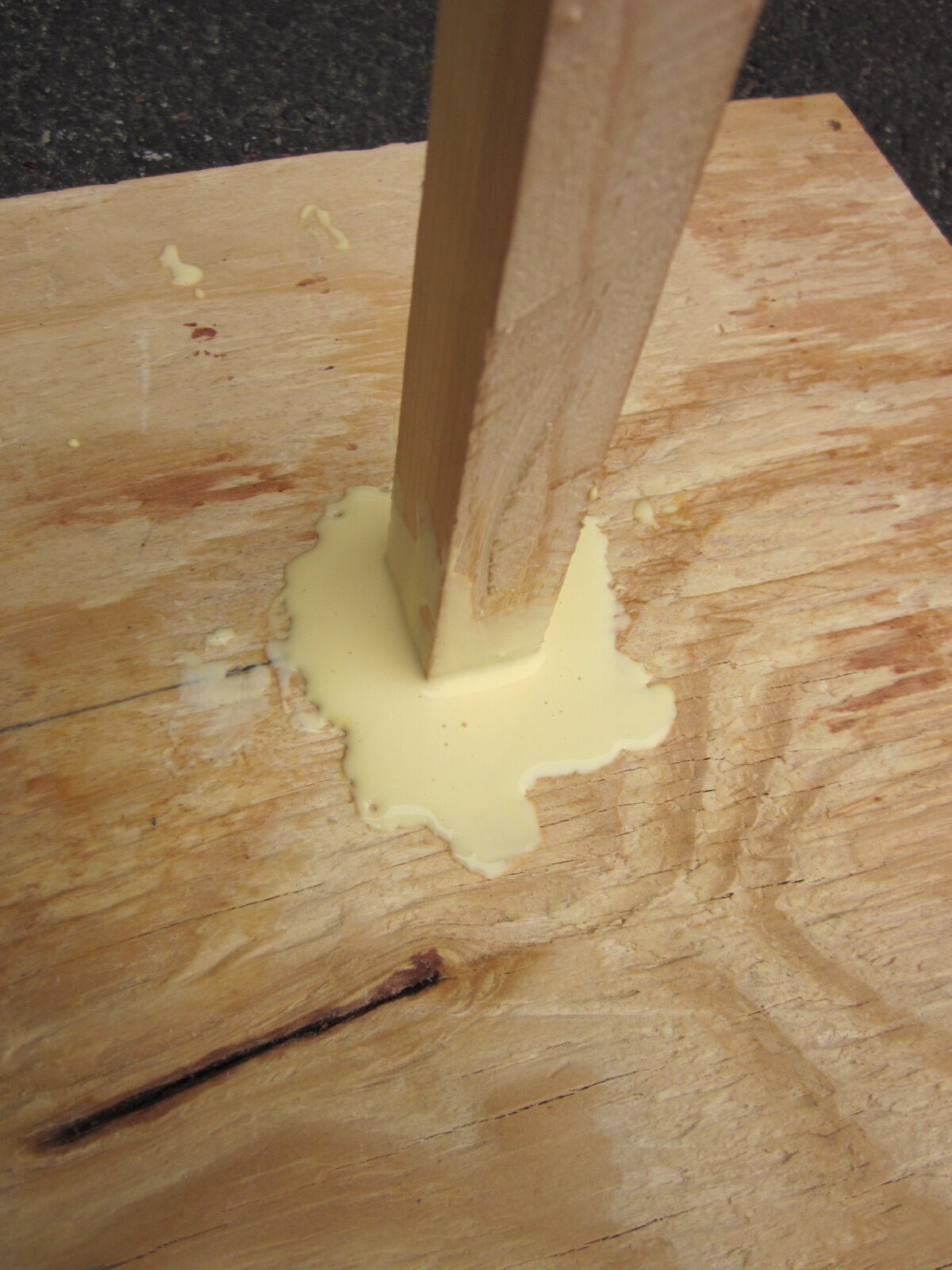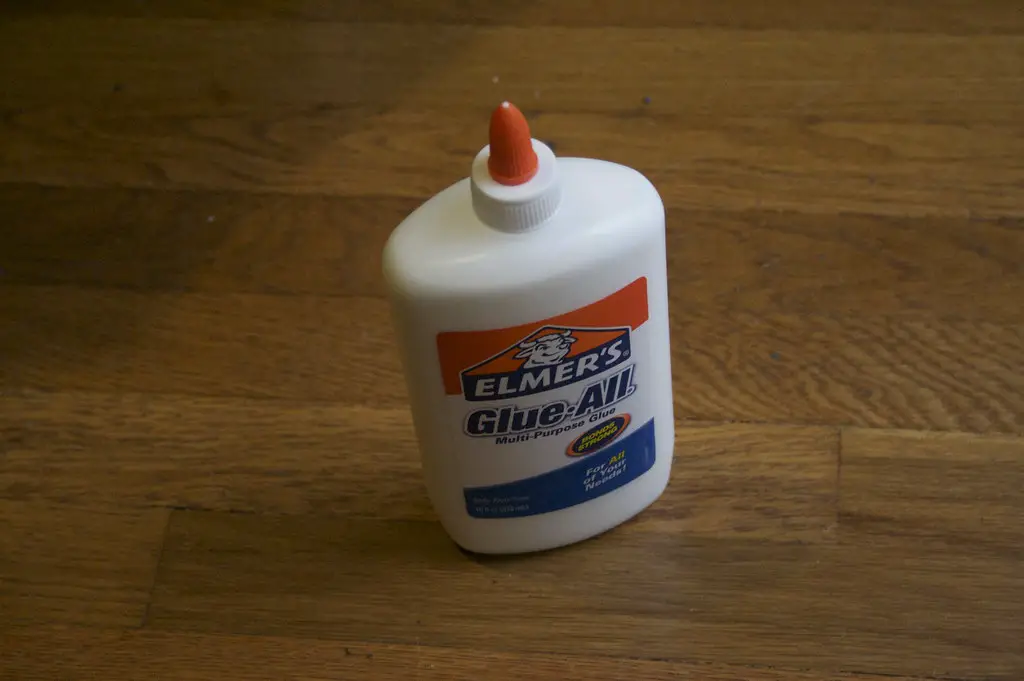Wood glue is a type of adhesive that is specifically designed for bonding wood materials together. It has been used for centuries as a reliable and effective method for joining wood pieces, making it a popular choice among carpenters, woodworkers, and DIY enthusiasts.
One common problem faced by many homeowners is a broken chair leg. Whether due to age, wear and tear, or an unfortunate accident, a broken chair leg can render your favorite piece of furniture unusable. In such situations, many people wonder if wood glue is a suitable solution for fixing the broken leg and restoring the chair to its former glory.
It can be a common household issue, especially with wooden furniture. Whether it’s due to wear and tear or a sudden accident, broken chair legs can greatly affect the functionality of your furniture.
Fortunately, there are several solutions to fix a broken chair leg, one of which is using wood glue. Wood glue is a strong adhesive that can bond pieces of wood together, making it an effective solution for broken chair legs.
Understanding Wood Glue
What wood glue is
Wood glue is a powerful adhesive substance specifically formulated to create strong bonds between wooden surfaces. It is made from synthetic polymers or natural substances like animal hides, which are known for their exceptional bonding properties.
The glue works by penetrating the wood fibers and hardening, effectively locking the pieces of wood together. It is renowned for its durability and resistance to moisture, making it an ideal choice for both interior and exterior woodworking projects.
Additionally, wood glue is non-toxic, making it safe to use around the home.
How Wood Glue Works
Wood glue, when applied to a surface, begins a chemical process known as polymerization as it dries. This process involves the glue’s molecules linking together, forming a hard polymer matrix that adheres strongly to the wood’s surface.
This polymer matrix then penetrates the wood fibers, creating a bond that is often stronger than the wood itself. The water in the glue also triggers a reaction in the wood, causing it to swell slightly.
This swelling ensures a tighter bond as the glue dries and the wood shrinks back to its original size, further enhancing the adhesion. Therefore, wood glue forms an incredibly strong bond, often making the repaired location in a piece of wood furniture stronger than it was before the break.
Process of Fixing a Broken Chair Leg with Wood Glue
1. Gathering Necessary Tools and Materials
Before initiating the repair, gather all the necessary tools and materials to facilitate an efficient and effective process. Essential items include:
Wood Glue: A high-quality wood glue is crucial for a strong and durable repair. Opt for a glue that is waterproof and specifically designed for wood to ensure the best results.
Clamps: Clamps are used to hold the broken parts together while the glue dries. They ensure a tight bond and help to keep the chair leg aligned during the repair process.
Sandpaper: A piece of sandpaper is useful for preparing the surface of the broken parts. By creating a clean and smooth surface, you increase the effectiveness of the glue’s bond.
Cloth or Rag: You’ll need a clean cloth or rag to wipe away any excess glue that seeps out when the broken parts are clamped together.
Wood Filler (Optional): If there are any cracks or gaps in the wood after the repair, wood filler can be used to correct these imperfections.
2. Preparing the Broken Chair Leg
Once you’ve gathered all the necessary tools and materials, the next important step is preparing the broken chair leg for repair. Begin by cleaning the broken surfaces to remove any dust or debris that may interfere with the glue’s ability to bond.
Use the sandpaper to lightly sand the edges of the break, creating a rough surface that will help the glue adhere better. After sanding, use a clean cloth or rag to wipe away any residual dust.
During this process, be careful not to remove or alter any splinters that fit into the other piece as they will assist in aligning the parts back together. Remember to dry fit the pieces together before applying the glue to ensure they align properly.
This careful preparation sets the stage for a successful repair, allowing the wood glue to form a strong and durable bond.
3. Applying the Wood Glue
Next, it’s time to apply the wood glue to the broken chair leg. To start, gently open the glue bottle and apply a generous amount of glue to one side of the broken pieces. The glue should cover the entire surface, including any cracks or crevices.
Once the glue is applied, carefully fit the pieces together, ensuring that the splinters and other identifying marks line up correctly. Hold the pieces together, applying a little pressure to ensure the glue spreads and covers the entire surface.
If any glue seeps out from the joint, wipe it away immediately with a rag to prevent it from hardening and affecting the appearance of the chair. After bringing the pieces together, secure them with clamps. Make sure the clamps are tight enough to hold the pieces together but not so tight that they deform the wood.
Be patient; allow the glue to dry according to the instructions on the bottle, typically 24 hours, to achieve the best bond. Eagerly moving to the next step without proper drying can lead to a weak bond, risking the durability of the repair.
4. Joining and Clamping the Broken Parts
With the wood glue applied, proceed to join the broken parts together. Carefully align the pieces, ensuring that any original splinters, indentations, or other distinct features match up to facilitate the most seamless bond possible.
Apply moderate pressure to the joint to ensure the glue permeates throughout the breakage and increase the resultant bond’s strength.
Once aligned, it’s time to secure the joint with clamps. Position the clamps on the chair leg in such a way that they apply pressure directly to the breakage.
The clamps should be tightened until they are holding the pieces together firmly, but be cautious not to over-tighten as this can cause deformities in the wood or even damage the joint.
The clamps should remain in place while the glue dries – typically, for about 24 hours as per most wood glue instructions. It is crucial not to disturb the chair during this curing period to allow the bond to reach its maximum strength. After the drying period, gently remove the clamps and check the repaired area for stability before moving on to the next steps of refinishing or restaining.
Drying time
It is essential to follow the recommended drying time for wood glue. Rushing into finalizing your repair before the glue has cured fully can compromise the strength and longevity of the bond.
Additionally, each type or brand of wood glue may have different drying times, so it is always best to refer to the instructions on the bottle.
Moreover, factors such as humidity and temperature can also affect the drying time of wood glue. It is advisable to work in a well-ventilated area with moderate temperatures and avoid exposing the repair to direct sunlight or extreme heat, as this can cause uneven drying and potentially weaken the bond.
Related Topics:
Considerations when Using Wood Glue
The strength of wood glue
Wood glue is designed to create a strong bond between two pieces of wood, but its strength may vary depending on the type and brand. Some wood glues are specifically formulated for heavy-duty or outdoor use, while others may be better suited for smaller repairs or indoor projects. Consider the intended use of the repaired chair leg when choosing the right wood glue.
Limitations and potential issues
While wood glue is an excellent solution for repairing broken chair legs, it may not be suitable for all types of repairs. For instance, if the chair leg has snapped completely in half or there are multiple breaks and cracks, it may be better to replace the leg entirely rather than relying on wood glue alone.
Additionally, some types of wood may not bond well with certain types of wood glue, so it is essential to do a small test patch before committing to the repair. Furthermore, wood glue may not be suitable for repairing chairs made from materials other than wood, such as plastic or metal.
Other Possible Solutions for a Broken Chair Leg
Other Types of Adhesives
While wood glue is generally the go-to adhesive for wooden furniture repairs, other types of glues might be used depending on the specific situation and the materials involved.
Epoxy Resin is a strong adhesive that can bond a wide range of materials including wood, metal, glass, and some plastics. It is particularly useful for complex and heavy-duty repairs as it forms a durable bond that can withstand stress and wear.
Super Glue (Cyanoacrylate) can be useful for small, precise repairs. It dries quickly and forms a tough bond, but it may not be ideal for larger repairs or for bonding large surfaces.
Polyurethane Glue expands as it dries, filling in gaps and crevices, making it useful for uneven breaks or cracks. However, it takes longer to dry than other adhesives, and surplus glue can be difficult to remove once dried.
Professional Repair Services
Often, the complexity of the repair or the value of the furniture might necessitate professional intervention. Furniture restoration and repair services specialize in restoring furniture to its former glory.
They have extensive knowledge of different types of wood, the appropriate adhesives to use, and the best techniques to ensure a seamless repair. In addition, professionals have access to specialized tools and equipment that allow them to perform repairs that may be too complex for a typical DIY enthusiast.
While this option may be more expensive than a home repair, it offers the advantage of expert craftsmanship and can be particularly worthwhile for valuable or antique furniture.
Conclusion
To sum up, repairing a broken chair leg can be a straightforward DIY task or a complex project requiring professional intervention. The choice of adhesive, whether it be wood glue, epoxy resin, super glue or polyurethane glue, depends on the specific circumstances of the break and the materials involved.
While DIY repair offers the satisfaction of self-accomplishment and cost-saving, professional repair services provide expert craftsmanship, especially significant for valuable or antique furniture.
Therefore, understanding the extent of damage and assessing your capability is key to making an informed decision on how best to fix a broken chair leg.


1 thought on “Can Wood Glue Fix A Broken Chair Leg? How?”